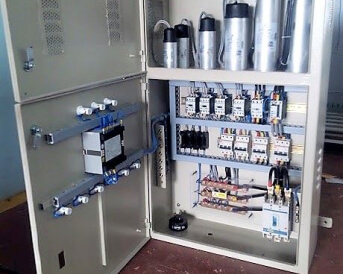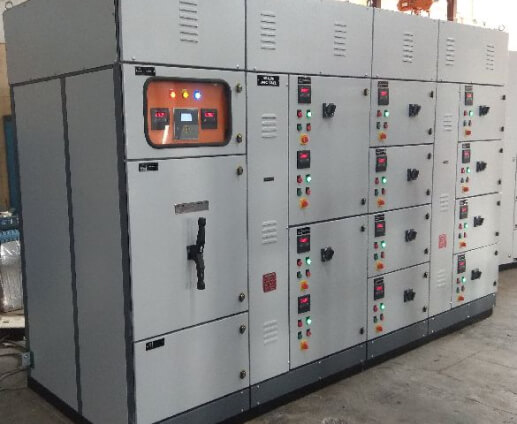Power factor correction Power factor correction is the term given to a technology that has been used since the turn of the 20th century to
restore the power factor to as close to unity as is economically viable. This is normally achieved by the addition of
capacitors to the electrical network which compensate for the reactive power demand of the inductive load and thus
reduce the burden on the supply. There should be no effect on the operation of the equipment. To reduce losses in the
distribution system, and to reduce the electricity bill, power factor correction, usually in the form of capacitors, is
added to neutralize as much of the magnetizing current as possible. Capacitors contained in most power factor correction
equipment draw current that leads the voltage, thus producing a leading power factor. If capacitors are connected to a
circuit that operates at a nominally lagging power factor, the extent that the circuit lags is reduced proportionately.
Typically the corrected power factor will be 0.92 to 0.95. Some power distributors offer incentives for operating with a
power factor of better than 0.9, for example, and some penalize consumers with a poor power factor. There are many ways
that this is metered but the net result is that in order to reduce wasted energy in the distribution system, the
consumer is encouraged to apply power factor correction. Most Network Operating companies now penalize for power factors
below 0.95 or 0.9.
Key Words
- IEEE 519, Power quality
- Accurate PF Control
- Long Life Capacitor duty contactors
- Cost Effective
Features
The BITmatic series of automatic capacitor banks come in three variants –tuned, de-tuned and without filters.
These
panels use the SPFCR-3 series of microprocessor based PF controllers which senses load from all the three phases
thereby
allowing for more accurate PF control while also providing for superior performance, monitoring and data logging
capabilities. All ratings of panels have suitable forced cooling arrangement through the use of requisite number
ofthermostats and cooling fans. These panels come with a wide range of configuration options for capacitor
types, PF
controllers, protection and construction to suite site-specific requirements.
Benefits of Power factor correction
The benefits that can be achieved by applying thecorrect power factor correction are:
- Environmental benefit. Reduction of power consumption due to improved energy efficiency. Reduced power
consumption
means less greenhouse gas emissions and fossil fuel depletion by power stations.
- Reduction of electricity bills
- Extra kVA available from the existing supply
- Reduction of I2R losses in transformers and distribution equipment
- Reduction of voltage drops in long cables.
- Extended equipment life – Reduced electrical burden on cables and electrical components.

 033-2231 8646/47
033-2231 8646/47 info@e-cube.in
info@e-cube.in